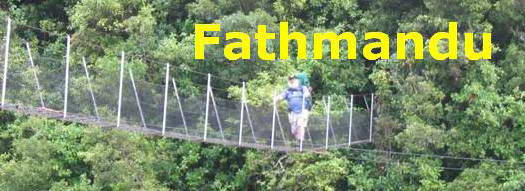
Many thanks for permission to use graphics from their software and toposheets |
 |
|
In the Steps of Jack LeighChapter 2: St Mary's Baypage 6 I head across into Cameron St. According to Leigh, locals believe the street was named for General Cameron who commanded the Imperial troops during the Waikato wars. They resisted vigorously when the council, in an attempt to minimise postal confusion, changed the street's name to Cheesman St after a curator of the Auckland museum. Leigh continues:
So much for historic treasures. Here is the present number 3.
We can guess what it might have been like from the still existing
But if I was a kid, I think I would love to live in the house at the end of Cameron St. According to Leigh, it was reputedly built about 1906 from £5000 lottery winnings
It's hard to look anywhere without finding some detail that somebody has taken enormous trouble with, from the starry windows
to the intricate facings on the gable
or the minaret on the corner
Across the road is a large version of my EZIDRI home food drier. It also reminds me of a wormfarm belonging to one of my green friends.
The vast capacity of this building for blocking sunlight from its neighbours makes me wonder what town planning departments exist for. Call me old-fashioned but..... St Stephen's Presbyterian Church across the way was designed by Edwatd Mahoney, who was also reponsible for the chapel of the Sisters of Mercy in New St. Built in 1879, it is an old haunt of mine from the sixties.
I grew up in a small town where the vast majority of teenage socialising was through the local Bible Classes, and as a university student based in nearby Ponsonby Terrace it was only logical to find the local Presbyterian Church and join up. The St Stephens organ is impressive. I recall an occasional highly unofficial music concert with Forbes Neal, the son of the minister, thundering out current rock and roll hits and the old building wondering whether perhaps John Wesley was back in town. Across the road is a line of substantial double storey villas in various phases of restoration and retail conversion
and of course more for my lace collection
There's something, too, about the elegance of the joinery in the St Stephen's window that grabs me back before I get on my way again.
Along the way is the Baptist Church
but it's not for my liking as much of a piece as St Stephens.
almost as if it had been built out of a collection of leftover church bits.
Just along the road are a couple of brick cottages that I hope are on somebody's preservation list.
We're almost back at the old post office
I head round the back way down Dedwood and back to the van. Here's a voice from the past, when nearly every small town had it's Plunket and Ladies' Restroom, the latter primarily for breast feeding mums and nappy-changing purposes.
and something Leigh might have been a touch early for: Plunket in Maori.
The Plunket rooms are on the site of Bond's blacksmith shop, where, tradition has it, the nomination papers were first signed for Michael Joseph Savage, our first Labour Prime Minister. We've come a long way since this district began, even since 1906, when a law was passed making it illegal for Maori women to breast feed. (Maori infant mortality was unacceptably high, and conventional wisdom decided that was a consequence of Maori breast milk being inferior. Differences in racial immunity were still not well understood. The tragedy, as I have it, was that Maori women in many cases not being able to afford what passed for formula in those days used a mixture of flour and water instead, and the mortality rate remained unacceptably low for some time. I have half an idea that law is still on the books. That was still the case in the early 1990s when Miranda was training as a midwife.) On past the back of the Leys Institute and round the corner. Been a good walk, and lots to see, lots of history, lots of change. Catch you again as I follow in Jack's steps.
|
|